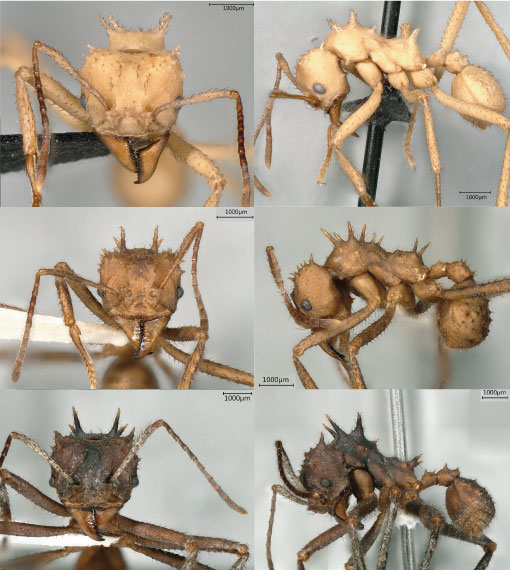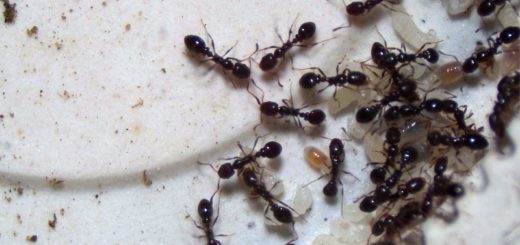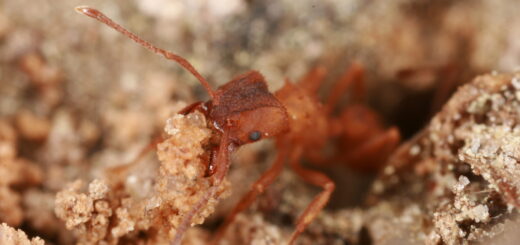Diversity and evolution of the Acromyrmex octospinosus species complex: a century-old taxonomic puzzle
In the paper “Phylogenomic approach to integrative taxonomy resolves a century-old taxonomic puzzle and the evolutionary history of the Acromyrmex octospinosus species complex”, first author Daniela Mera-Rodríguez and colleagues discuss their latest study of the Acromyrmex octospinosus species complex. They aimed to resolve the taxonomic confusion within this species complex, which was previously thought to consist of four species and three subspecies. The study defines a case of taxonomic over-splitting and illustrates an example of sympatric speciation of the inquiline social parasite A. insinuator with its host. This work reshapes our understanding of these widespread ants and provides an evolutionary basis for future studies.
An Interview compiled by Elia Guariento, Phil Hoenle, and Patrick Krapf

MNB: Could you tell us a bit about yourself?
DMR: I am a scientist passionate about evolutionary biology and biodiversity, and in particular, the immense diversity of ants. Currently, I am a PhD candidate at the University of Hohenheim, and my research focuses on studying ant speciation and evolution.
MNB: Could you briefly outline the research you recently published in layman’s terms?
DMR: In this study, we aimed to identify the biological species within the Acromyrmex octospinosus species complex, which was previously composed of four species and three subspecies. These ants were difficult to identify due to high morphological variability and broad biogeographic overlap between the putative species and subspecies. We analyzed samples from multiple populations across the biogeographic range of the species complex and reconstructed their evolutionary history. Using a variety of methods, we show that the A. octospinosus species complex consists of only two biological species: A. octospinosus, which exhibits significant diversity in morphology and social organization, and its social parasite A. insinuator. We also investigated the origin of A. insinuator, the only social parasite in the species complex, and found that it originated in direct sympatry with its host, A. octospinosus. Our study provides an evolutionary framework that resolves the taxonomic confusion in this species complex and improves our understanding of the biology of this frequently studied group of leaf-cutting ants.

MNB: What is the take-home message of your work?
DMR: The main takeaway message from our project is that, with the exception of the social parasite A. insinuator, the previously recognized species and subspecies within the A. octospinosus species complex are in fact a single species. This finding reshapes our understanding of A. octospinosus biology, as we now consider morphological and behavioral polymorphisms, as well as intra-population variation as common traits shaping the remarkable diversity within this group of ants. Another important result is that A. insinuator speciated in direct sympatry with its host species, A. octospinosus, providing an empirical example of sympatric speciation.
MNB: Why is this kind of research important?
DMR: Scientists have long been curious to document and understand the biodiversity around us. Likewise, the general public is becoming increasingly concerned about conserving biodiversity, particularly as awareness of the ongoing global biodiversity crisis grows. The first step in protecting global biodiversity is identifying the species inhabiting our planet. Therefore, research into species delimitation is essential for advancing our knowledge of biodiversity. This allows us to reassess taxonomically challenging groups using integrative methods, leading to a more accurate understanding of species and discovering previously unknown ones. In particular, identifying the biological species within the A. octospinosus complex reshapes our understanding of their biology, providing an evolutionary basis for future research on leaf-cutting ants.
MNB: Where do you see the future for this particular field of ant research?
DMR: Many ant groups still await taxonomic revision using modern integrative methods. The future of ant systematics will undoubtedly involve more advanced technologies, innovative methods and, hopefully, large international and diverse collaborations. When studying ant biodiversity, it is important to recognize cryptic species and describe new ones; we still have a lot of work ahead of us. However, our study also demonstrates that some species groups carry a historical taxonomic burden and were split into too many species, because people have had a long-standing interest in these ants for their natural history or pest-management reasons. Therefore, I believe it is important to study both sides of the same coin, by recognizing and describing new and cryptic species, as well as by delineating species boundaries in widely distributed and potentially over-split taxa. Personally, I look forward to a more accurate understanding of ant biodiversity and a solid evolutionary-based taxonomic classification of ants, which is crucial for our knowledge about the biological diversity inhabiting our planet and for developing meaningful conservation strategies.
MNB: Thanks, Daniela!





Recent Comments